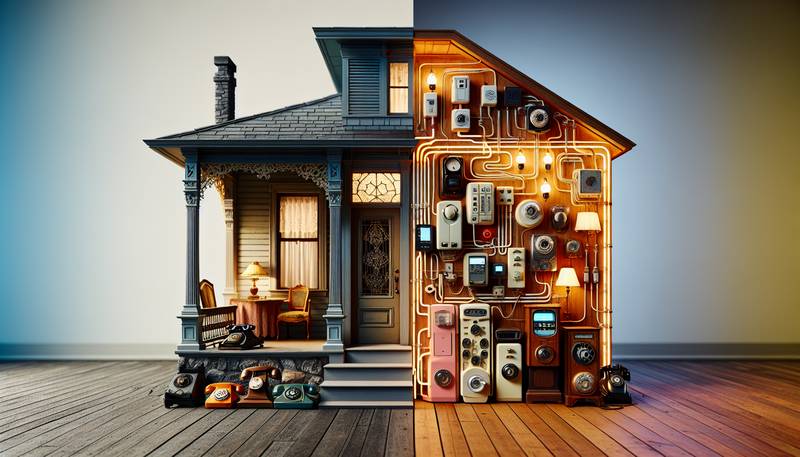Retrofitting Challenges: Electrical Insights for Older Homes

When Old Meets New: A Shocking EncounterIn a world where smartphones are practically an extension of our hands, it’s easy to forget that many homes were built when rotary phones were the height of technology. Retrofitting older homes with modern electrical systems can often feel like trying to fit a square peg in a round hole—if the hole is also stuck in the past. While it may seem daunting, upgrading electrical wiring can prevent a host of flickering lights and appliance meltdowns, allowing homeowners to enjoy their devices without feeling like they’re a contestant on a survival show.But before diving into the exhilarating world of wires and circuits, it’s important to consider the unique challenges older structures present. Like that one eccentric uncle who refuses to upgrade from VHS tapes, older homes come with their quirks—and sometimes, they throw shocking surprises your way, quite literally.Understanding Your Home's Electrical HistoryEvery older home has a backstory, and it’s not all love at first sight. Understanding the existing electrical system is crucial before making any changes. Homes built before the 1960s often used materials that would make today’s electricians shudder. Knob-and-tube wiring, for example, sounds like a fun game but is more like an exhilarating rollercoaster ride—without the safety harness.Inspecting the current wiring is like a treasure hunt, where your prize might just be avoiding a fire hazard. Homeowners should engage a professional electrician to evaluate the setup. This expert can deftly navigate the tangled web of history, ensuring that the wiring meets modern standards. Just remember: if your electrician starts laughing maniacally while peering into your fuse box, it may be time to reconsider your choices.Bringing the Power to Your CastleOnce the historical context is established, the real fun begins. This phase is where you can bring your home into the modern age—and perhaps enjoy a few gadgets that make life exponentially more entertaining (or at least less prone to electrical fires). Upgrading an electrical panel is akin to feeding your home a healthy diet of electricity. An outdated panel resembles that one old computer—clunky, slow, and prone to crashes. Investing in a new panel can boost both safety and functionality, providing more circuits to accommodate today’s electronic demands.Adding outlets is like giving your home a refreshing face-lift. With enough outlets, you can turn a claustrophobic living room into a sprawling tech hub. Just picture it: a charging station for every gadget, every corner alive with the glow of technology. Of course, you may need to explain to your visitors why there are power strips in every conceivable location—just tell them it’s an artistic statement.The Dance with Local CodesEvery region has its own electrical codes, and navigating these can feel more complicated than contorting your body into a yoga pose. Local codes exist for a reason: safety, accountability, and, let’s be honest, making sure your home doesn’t become a fiery beacon to the neighborhood. What may seem like a simple outlet addition might require permits and approvals that feel like applying for a passport. But don’t fret! Local inspectors are super helpful (and not at all lurking in shadows), ready to guide you through this bureaucratic ballet. They might even show up with a checklist longer than your weekend grocery list, but such is the way of progress.Investing in Future ComfortRetrofitting isn’t merely about bringing your electrical system up to date; it’s about creating a comfortable living space for you and your family. With the right upgrades, you can enjoy the perks of modern technology without worrying about the occasional circuit overload.Consider energy-efficient options like LED lighting and smart home systems. These upgrades not only reduce your carbon footprint but also keep your electricity bill from resembling a small mortgage payment. Plus, who wouldn’t want to impress their friends with a home that responds to voice commands? Just remember to keep the lights on when introducing your home’s new, tech-savvy personality.Watt’s Next? A Bright Future AheadIn the grand scheme of home improvement, retrofitting an older electrical system may feel slightly overwhelming. However, once the dust settles and the wiring is safely tucked away, you’ll find yourself basking in the glow of modern conveniences. Not only do these updates boost safety, but they also add value to your home. It’s like giving your property a shot of espresso—suddenly, it’s awake and ready for anything! By embracing these challenges, you can turn your old castle into an electrical wonderland. Let there be light—preferably without the flickering!
|
|







